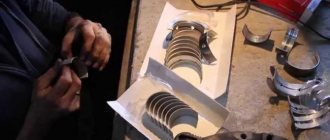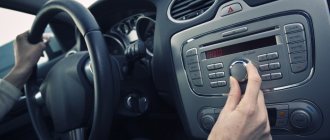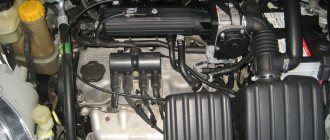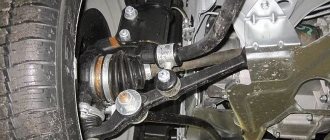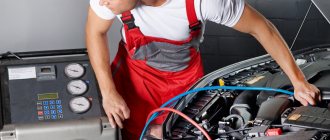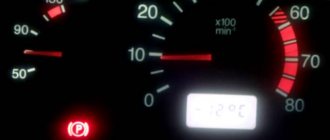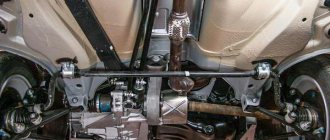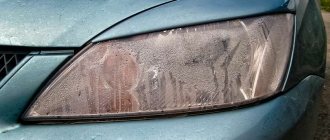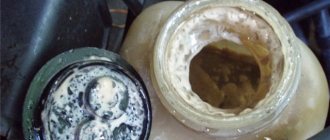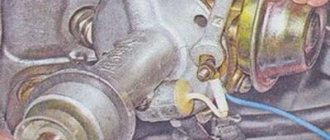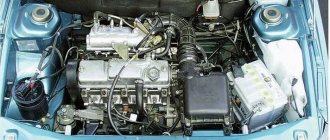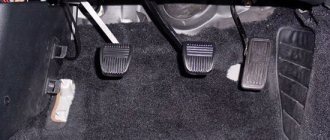Often on numerous forums dedicated to automotive topics, you can read topics about knocking in the engine or cranked bearings. This is an emergency situation in the internal combustion engine. When they say that the liner has rotated, this means that the plain bearings on the crankshaft and on the connecting rods have been torn out of their seats and have become unusable. This is a serious breakdown that happens quite often. Car enthusiasts see the reason in low-quality motor oils from an unknown manufacturer.
But there are many more reasons, and they are not directly related to the lubricant and its quality. To prove this, there are many examples where main bearings fail if branded original oil is poured into the engine. Or vice versa - bearings operate for hundreds of thousands of kilometers on average quality oils. Let's figure out why the crankshaft liners rotate, what factors influence this, and what is the main reason for this phenomenon.
Connecting rod bearing - what is it?
There is one very highly loaded part in an internal combustion engine. This is the crankshaft. The element is not mounted on traditional bearings. Due to design features, plain bearings are used. The design of these very parts may be different. But the constant improvement of engines has led to the fact that a sheet of steel coated with a special anti-friction layer is now used.
This is the connecting rod bearing. These elements are installed in special places - beds. The inserts are fixed. The need to fix these parts is due to the fact that they have holes for oil movement. They must match those in bed. Also, by means of fixation, friction is ensured on special surfaces designed for this purpose. The connecting rod liner is a kind of protective element, thanks to which the service life of the crankshaft is significantly increased.
Why does the liners rotate?
The liners in the engine are installed in special installation locations (liner bed). Installation requires special fixation, since the liners have holes in their body, which allows engine oil to be supplied to them. The indicated holes must clearly coincide with the holes that are drilled in the parts themselves for the passage of lubricant. Also, fixing the liner is necessary taking into account the fact that during engine operation friction occurs on the surfaces of the mating elements.
Taking into account the above information, it becomes clear that if the connecting rod bearing has turned, the reason may be as follows:
- insufficient fixation of the liner;
- strong friction on the surface of the liner;
As is known, friction occurs as a result of the sliding of two bodies relative to each other in the presence of a certain load. The total magnitude of the friction force will depend on the magnitude of the load on the rubbing pair, as well as on the friction coefficient. In order to reduce the friction force in the manufacture of parts, special anti-friction materials are used that have a low coefficient of friction.
As for the liner, anti-friction material is applied to its surface. The crankshaft performs a rotational movement in relation to the liners; at the junction of the liner and the crankshaft, a friction force arises, which tends to rotate the liners in relation to their installation locations. To protect against rotation and displacement, the liner is held in place by a special tendril. Also, during installation, the liners themselves are inserted with a certain interference, the value of which is calculated by the designers of a particular internal combustion engine.
It becomes clear that excessive friction or insufficiently reliable fixation (weak tension) are the main reasons why it is not possible to keep the liner in its seat. Note that during engine manufacturing at the factory, insufficient tension of the liners during the assembly of the internal combustion engine is extremely rare. More often, problems with main or connecting rod bearings appear after the engine has been repaired. In other words, incorrect selection of repair liners and other defects that do not allow the required tension to be achieved lead to turning. Since the crankshaft is subjected to uneven loads, the loosened liners begin to vibrate, the oil film on their surface is destroyed, and the liner can “get caught.” In such a situation, turning is inevitable, since the fixing tendril is simply not able to withstand the moment of turning on the liner itself.
As already mentioned, another reason for cranking of the engine bearings is an excessive friction torque, that is, the design operating conditions of the plain bearings themselves are violated. Normal operation of the liners involves so-called fluid friction, that is, the surface of the liner and the crankshaft journal are separated by an oil film. This avoids direct contact of loaded parts, provides the necessary lubrication and cooling, and minimizes friction.
It is quite obvious that if the oil film is not thick enough or breaks through, the coefficient of friction will begin to increase. The operation of mating parts that are under constant load under such conditions will mean that the cranking torque has increased. To put it simply, the greater the friction force, the more the risk of crankshaft liners turning under such increased loads increases.
An increase in loads in the liner-crankshaft pair leads to a decrease in the thickness of the oil film or to a complete rupture (dry friction). In parallel with the increase in friction force, increased heat release occurs, and local overheating occurs in the friction area. As heating increases, the temperature stability of the oil is disrupted, the thickness of the oil film decreases even more, and the liner can stick to the surface of the crankshaft journal.
It should also be added that the thickness of the oil film between the mating parts directly depends on the speed at which these parts move relative to each other (hydrodynamic friction). The faster the parts move, the more intensely the oil enters the gap that is present between the rubbing elements. It turns out that a thicker oil wedge film is created compared to the same film at a lower speed of movement of the mating parts. In this case, it is necessary to take into account the fact that an increase in the speed of movement of parts increases the friction force, and the heating from such friction also increases. This means that the temperature of the engine oil begins to rise, the lubricant thins out, and the film thickness becomes thinner.
The friction force is also influenced by the precision with which the surfaces of the mating parts are made, the degree of roughness of these surfaces, etc. If, for example, the surface of the liner or journal is uneven, then zones will arise in which almost dry friction will occur or the parts will contact under conditions of insufficient oil film thickness. At the same time, such dry friction zones can also occur in cases where mechanical particles are present in the engine oil, that is, the oil is contaminated.
For these reasons, after assembling a new internal combustion engine or overhauling the engine, the power unit must undergo a break-in process, which involves moderate loads and frequent changes of engine oil. The fact is that loaded pairs must run in to each other, since grinding gradually eliminates possible existing microdefects that affect the formation efficiency and subsequent stability of the formed oil film.
Let us add that the viscosity of the oil in the engine also has a certain effect. More viscous oils cause increased friction torque in loaded pairs. In parallel with this, the thickness of the viscous oil film is also greater at the junction of the parts. However, this does not mean that loaded parts will be protected from increased or dry friction. The fact is that the viscous lubricant may simply not reach the friction point in the required quantity, which leads, in turn, to a decrease in the thickness of the film or even its rupture.
For this reason, it is not so easy to answer which oil is better for bearings and their rotation, taking into account only one viscosity indicator. We should not forget that the most important characteristic is also the lubricity of the oil, that is, the ability of the lubricant to adhere to metal surfaces. The stability of the film of a particular oil under conditions of various loads and temperatures should also be taken into account.
Difference between main and connecting rod bearings
You need to know that there are two types of liners. These are connecting rods and main ones. The first are located between the connecting rod and the crankshaft journal. The root element is similar to the first in its purpose. However, it is located where the crankshaft passes through the engine housing. The inserts vary in size. Dimensions depend on the type of internal combustion engine for which a specific part is made. There are also special repair inserts. They are different from the original new ones installed in the engine. Repair inserts differ only in marks that are multiples of 0.25 mm. So, their sizes are approximately the following - 0.25 mm, 0.5 mm, 0.75 mm, 1 mm.
Replacing the crankshaft
So how do you remove the crankshaft? This will require complete disassembly of the engine. To replace you need:
- standard set of tools;
- torque wrench;
- crankshaft clamp MR 1-233.
Removal of the crankshaft can be performed after dismantling the engine and installing it on a repair stand, timing components, engine equipment, cylinder head, connecting rods and pistons.
Scheme of assembly and installation of the crankshaft Skoda OCTAVIA TDI 1996-2002 in the engine block 1,9,1315,17 - mounting bolts, 3 - flange, front pressure, 4 - bearing shell, 5 - chain sprocket, 6 - crankshaft shaft, 7 — bearing shell, 8 — crankshaft half rings, 10 — bearing cap, 11 — mounting pin, 12 — sensor wheel, 2 — sealing ring (oil seal), 14 — flywheel and drive disk, 16 — intermediate plate, 18 — sealing gasket (with oil seal).
Source
Reasons for rotating liners
So, the crankshaft is a part that works in harsh conditions, and it has to withstand enormous loads in extreme temperatures. In order for the mechanism to be securely held on the axis and to ensure the correct operation of the entire crank mechanism, liners are needed. The journals on the shaft act as an internal race. Inserts - as external ones.
The internal combustion engine block has channels for supplying lubricant under pressure. Due to the oil film that envelops the liners, the crankshaft can rotate. Why do car owners encounter situations where the crankshaft liners have turned in the engine? There are several possible reasons. Let's look at them below.
Mechanical wear
The first reason why the main and connecting rod bearings are replaced when repairing an engine is wear. Parts wear out due to mechanical loads. Many people try to save their earbuds, but it is useless. Physics is involved here, and physical processes cannot work any other way. Wear and tear is inevitable. The anti-friction layer on the liner wears off over time. This leads to free movement of the crankshaft. Backlashes appear. As a result, the oil pressure decreases, quite significantly. On most engines that are highly reliable, if the liner turns, this indicates their wear.
Rotating the crankshaft connecting rod bearings
This is also one of the popular faults. Many car owners have faced this problem. But not everyone knows about the reasons. Let's figure out what happens to the element. The connecting rod bearing plate is quite thin.
It is installed on a special seat. The outer walls on the half rings have special protrusions, which, even in a non-run-in and undeveloped engine, rest against the front part of the cylinder block. At a certain point, the seat simply cannot hold the connecting rod bearing. The result is a typical situation - the liner has turned. The plate not only rotates, but also sticks to the crankshaft journal. In this case, the engine stalls and will not start again.
Description of how the earbuds work
Before we move on to describing the signs, causes and methods for eliminating wear of liners, it is necessary to understand their purpose, types and principle of operation.
There are two types of crankshaft liners - main and connecting rod. In essence, the liners are plain bearings, and their task is to withstand significant loads that occur between the connecting rod and the crankshaft journal. In modern machines (in most cases), the liners are made of ductile aluminum alloys (usually aluminum and tin). They are coated on top with an anti-friction compound.
The main bearings are located between the crankshaft and the place where the crankshaft passes directly through the engine body, in seats called “beds”. The main bearings have holes in their design designed for better oil drainage. That is, the main bearings are sliding bearings for the main journals of the crankshaft. But in fact, the crankshaft rests and rotates on the main bearings.
The connecting rod bearings are located at the bottom of the connecting rod head. And the connecting rods, in turn, are secured using connecting rod bearings on the connecting rod journals of the crankshaft. The function of the connecting rod bearings is that they act as plain bearings for the lower ends of the connecting rods and the crankpins of the crankshaft.
Wear of the liners implies a significant increase in their gaps (the greater the increase, the worse). As a result, the pressure in the engine lubrication system drops. Usually in such cases, a light (oil can) lights up on the dashboard, symbolizing that the oil pressure has dropped significantly. This is especially common on a hot engine, when the oil viscosity is minimal. In such cases, drivers say that “the bearings do not hold oil.” Wear of the liners is a very dangerous problem that can lead to great wear and tear on other engine parts and the engine as a whole. And this can lead to a significant reduction in their resource and damage.
The sound from the knocking of the main liners is usually dull, with a metallic tint. It is easy to detect when the engine is idling, and after that the speed increases sharply (sharply press the gas pedal). At the same time, a large load is placed on them and a knock appears. The same should be done with the connecting rod bearings.
It is not difficult to find out which cylinder the liners are knocking on. To do this, you need to turn off (unscrew) the spark plugs on a gasoline engine or the fuel injectors on a diesel engine one by one. If the mentioned knocking noise disappears when a spark plug is unscrewed, it means that there is a problem in this cylinder.
Causes of connecting rod bearing failures
Internal combustion engine repair specialists see several reasons why plain bearings rotate. This is often due to excessively thick oil, which contains metal particles. Lubricant with chips has an abrasive effect on the liners. Often there is a complete lack of oil. This especially affects cars with worn oil scraper rings. Some of the lubricant simply goes “down the pipe.” As a result, the liner rotated and the engine was sent for repair. The bearing caps may not be tightened sufficiently together. And finally, one more reason. This is too thin oil. Such products are especially harmful for motors operating under high loads.
Preference violation
If the liners have turned, this could be the reason. This will not happen in production cars assembled at the factory by qualified specialists. But if the engine has already been repaired, then, most likely, the selection of liners was made incorrectly and the tension was broken.
When the motor is running, the liners experience increased friction torque. This moment tends to rotate the liner. And due to the reduced force that holds the part in place, the risk of turning increases significantly. Under the influence of an uneven load, a weak fit of the friction bearing causes the liner to vibrate. The lubricating film is also damaged. As a result, the part rotates, and the retaining threshold is unable to prevent this.
Replacing liners without removing the engine - do it yourself
Sometimes a car requires very minor repairs, just replacing the liners, but is it really necessary to remove the engine, look for a hoist or several assistants for such a simple procedure? When it comes to such a need, replacing the liners without removing the engine will help. This simple type of repair does not require a large number of tools, but it does require some skill, so you should immediately evaluate your skills.
Inside the engine on the crankshaft, the liners are attached to a tendril, which is responsible for fixing the bearing in the engine bed when it is running. And lubricant is supplied to them through a special groove; a lack of lubrication always leads to the appearance of snags and jamming. Due to such liners, the wear time of the part is reduced, so they must always work at one hundred percent, otherwise major repairs cannot be avoided in the near future. However, during the trip you may find:
- Rotating the liners. If the fastening tendril has jumped out of its place (sometimes due to lack of lubrication), then it begins to rotate. Due to its rotation, scuff marks will appear on the journal, leading to the need to grind the crankshaft.
- Backlash. This breakdown can be easily heard by the knocking sound of the crankshaft. As soon as you hear suspicious knocking noises, repairs should be made immediately, without the need to remove the motor from the mount.
How to determine a breakdown
When turning the main bearings, the crankshaft and cylinder block immediately fail. If the connecting rod bearings rotate, the connecting rod itself, the spindle, and the cylinder block will fail. As a result, the car owner can only benefit from a major engine repair. This failure can be determined. There are some signs of loose liners. One of them is a characteristic metallic knock throughout the engine.
It does not stop even at idle, and with increasing load it knocks even more intensely. Another sign is low oil pressure. If the engine is cold, then there may be no sounds. If the situation is hopeless, the engine will stall, and it can only be revived by repair.
What's the result?
Taking into account the above information, we can conclude that the appearance of knocking in the engine is a sign for immediate cessation of operation of the vehicle. It should also be taken into account that the condition of the liners is greatly influenced by the operating temperature of the power unit. In other words, engine overheating can lead to cranking of the connecting rod or main bearings, engine jamming, etc. In this case, the engine may become completely unusable, as the crankshaft bed breaks, the crankshaft itself, the cylinder block, etc. fail.
Finally, we add that the gasoline engine needs to be warmed up after a cold start, then you need to drive without loads until the power plant reaches operating temperatures. In the case of a diesel engine, the engine warms up while driving; it is not recommended to sharply load the unit until it is completely warmed up. It should also be remembered that both a new engine and a motor after repair need to be run in, since loaded pairs and mating elements need to be ground in.
Main and connecting rod bearings: purpose, design and operating features of plain bearings. How to tighten liners correctly, tightening torque.
What should be understood by the definition of “knocked engine”. Why does the engine start knocking? In what cases does a knocking sound in the engine indicate a breakdown of the internal combustion engine.
What does it mean to overhaul a car engine, what work is performed. What determines the engine life before overhaul and how to increase it. Useful tips.
For what reasons does piston pin knocking occur during vehicle acceleration and operation under load: fuel quality, ignition, mixture composition, and others.
What can knock, whistle, rustle and make other extraneous sounds under the hood after starting the engine. Diagnostics and determination of faults.
Purpose and design of the crankshaft of an internal combustion engine.
Repair and consequences
Typical situation - the liners have turned. What to do? The problem can be solved in different ways, depending on the nature of the damage. In some cases, you can get by by replacing the liners with grinding the crankshaft. In difficult situations, repairs will be significantly more expensive.
If the connecting rod bearing has turned, this is not a serious problem in modern engines. But this does not apply to the indigenous. It often happens that a damaged liner is simply replaced, and the motor continues to work. Experts do not recommend this approach. The service life of the connecting rod-crankshaft journal pair restored in this way can be greatly reduced. A much more acceptable option is to replace the connecting rod with which the problem occurred. Also, if the liners are turned (including VAZ-2172), the lock on the connecting rod will definitely break. It would be more optimal to bore the crankshaft to the next repair size and completely replace the liners and connecting rods. It is imperative to grind the shaft after turning it.
Scores form on the mechanism neck. This is the only way to achieve the desired surface condition and the engine will operate correctly.
turned the liner (sharing my experience)
I bought a car (in signature) for 37 thousand. The price is good, but that was not the case... After 2 months (2.5 thousand km) on the highway (without reaching the destination 2 km), the liner turned at 140 km/h (total). We took it to a local (village) service center, threw off the pallet - there was slag in it! Wood shavings, pieces of iron... The serviceman showed me some inserts made of tin from beer cans. And he said that the engine was assembled “just to push it”! The liner that turned and the connecting rod on it are black (probably from overheating), and on the neck of the knee (black) there are scuffs. They opened the remaining connecting rods - one was shiny, but with grooves, the rest were more or less normal. They said there was nowhere to sharpen the knee. I'll take a new one, with a connecting rod of course. I found it during disassembly - a 5,000 elbow with original bearings and a 1,500 connecting rod. (I’ll take my (city) serviceman with me to have a look) Prices for rubber bands and gaskets in accordance with the list that the “village” serviceman said to buy:
- – set of gaskets 1 200
- - damn under head 350
- – crankshaft oil seal 150+600 (front and rear)
- - oil seal camshaft 150
- - oil seal oil pump 130
- - damn oil pump 100
- – oil filter 130
- – oil 800 (enios 5w30)
- + about 10,000 for the serviceman’s work
That's how I flew into dvatsakha.
Comments are welcome. Interesting opinions like “expensive-cheap”, “you can find it cheaper” or “I have it, I’ll give it to you for __ rubles” And the opinion on Enios oil is also interesting.
toyota sprinter marino G-type silver 09.1994 [4a-ge, automatic transmission,] icq: 289378213
The main thing is that everything works, but in the meantime, take a recognizance from your foreman as a guarantee if anything happens :))
Take everything original! Better buy everything yourself. Also replace the liners with new, new rings. Measure the cylinders, pistons, crankshaft, grind and sharpen if necessary. The car is old, and besides, the engine, you say, is all rubbish. You can't get away with just replacing the earbuds.
Volvo XC60 3.0 T6 2008 Kia Cerato Koup 2.0 2010
agaryshev, everything is in suspension, you need to measure it... there’s a lot of stuff that could be in the “oval”, it might be better to find the block in disassembly, or the engine right away.
In my opinion, you are already convinced that it’s cheap to do. So don’t cut it – it’s an old car, you’re making it for yourself.
My conscience is clear - I don’t use it......
GOOD EXPERIENCE)) And regarding Eneos - there’s a thread about the fist of friendship in the next thread..))
– Do you know which concentration camp they are taking us to? – I don’t know, I’m not interested in politics.
The original crankshaft costs 23,000, a connecting rod, 7 rubles, gaskets and seals will cost about 7 thousand. A block or engine is also not a cheap pleasure. I won't take this out! :))) In analysis, the worse the knee is, well, it didn’t take much - it wasn’t fatal, that’s why it’s original. Let's see about the inserts, maybe we'll have to get new ones. And when I picked up the car, there was 11 points of compression in all cylinders. Of course, I will measure it again with them, in the village. So I'm going to buy everything myself.
toyota sprinter marino G-type silver 09.1994 [4a-ge, automatic transmission,] icq: 289378213
Compression is not an indicator! The connecting rod and the knee will definitely be taken for analysis (and still measure both the connecting rod and the knee). And everything else is new.
Volvo XC60 3.0 T6 2008 Kia Cerato Koup 2.0 2010
Gentlemen, tell me, please! How long can a 3s-fe crankshaft be ground? And how to determine which connecting rod to buy if there is no way to see which ones are on the car now. During the analysis they said that there are 3 types: thin, thick (connecting rod legs) and a pressed pin and with a ring.
toyota sprinter marino G-type silver 09.1994 [4a-ge, automatic transmission,] icq: 289378213
